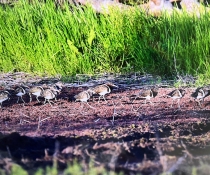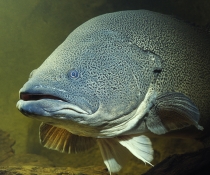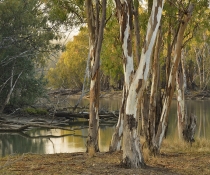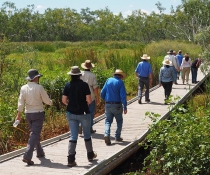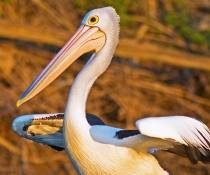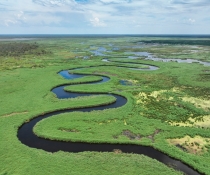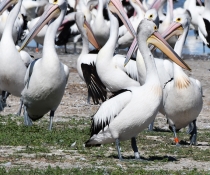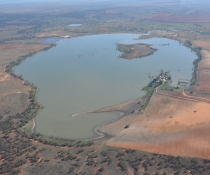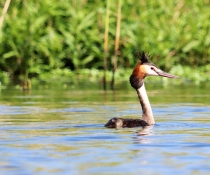Birds flock to Gol Gol
Birds are flocking to the Gol Gol wetlands in far western New South Wales to take advantage of ideal feeding and foraging conditions.
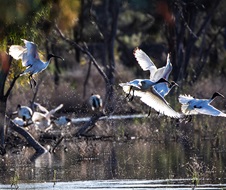
A series of wet years followed by a recent unregulated flow have topped up Gol Gol Lake and provided an ideal habitat for more than 50 wetland and woodland birds.
Just this month, researchers have discovered nesting colonies of white ibis, straw-necked ibis, Eastern great egrets, and royal spoonbills in the wetlands.
Gol Gol Lake is just a short 40-minute drive from Wentworth, 15 minutes from Buronga and 10 minutes from the Gol Gol township in New South Wales.
Ian 'Curly' Roberts, the Gol Gol Community Reference Group chair, would love to see more people visiting the lake.
'It's a hidden gem,' he said.
'Early in the morning, when there is a fog about, it's absolutely beautiful. Or late, late afternoon, just before sunset, looking back across the wetland from the lunette – it is stunning.
'So many birds and 6 species of frogs. It is an amazing place.'
The community reference group has been working to improve the Gol Gol wetlands since the 1990s. They have upgraded infrastructure to enhance connectivity between Gol Gol Creek and the wetlands, managed flows and monitored outcomes.
'Our aim is to hand it over to the next generation in a better condition than when we started,' Mr Roberts said.
Mark Henderson from the NSW Water for the Environment program has been working with the community reference group to help manage unregulated flows into the lake.
'The results have been impressive,' Mr Henderson said.
Monitoring has detected a wide range of bird species using the wetlands.
Some of the more common varieties are:
- Australian white ibis
- black-winged stilt
- red-necked avocet
- black swan
- black-tailed native hen
- Eurasian coot
- hardhead duck
- eastern great egret.
A variety of less common species have also been detected, including:
- nankeen night heron
- great crested grebe
- hoary-headed grebe
- rufus songlark
- Horsfield's bronze cuckoo
- orange chat
- southern whiteface.
'Over the coming summer, water is likely to remain in the lake providing important feeding and foraging habitat for birdlife,' Mr Henderson said.
'Together with the community reference group, we are developing a grant application for the installation of a new regulator which would allow for managed environmental flows between unregulated events.
'This would enable us to improve the habitat quality and support local wildlife during the drier times between periods of high flow,' Mr Henderson said.

